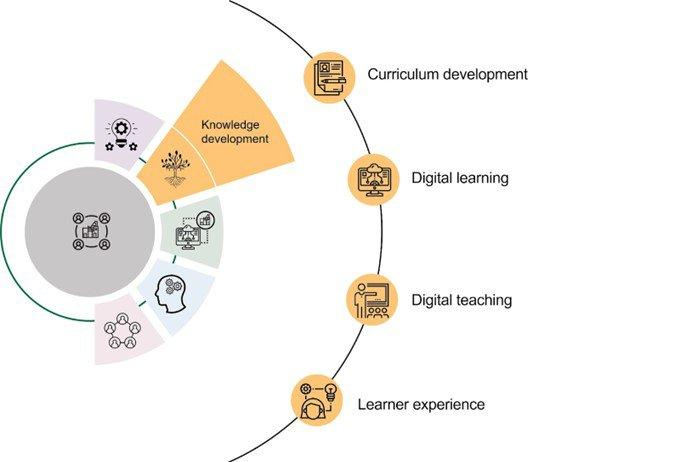Blended Learning: How to Combine traditional and Digital Education for Maximum Success
The education landscape is rapidly evolving, with digital technologies transforming how teachers teach and students learn. Blended learning, which seamlessly combines the best of traditional classroom instruction with innovative online educational tools, is leading this transformation. But what does blended learning realy mean, and how can educators, students, and institutions maximize its potential? In this complete guide, we’ll explore effective methods for integrating digital and face-to-face education, highlighting successes, practical strategies, and key benefits of blended learning.
What is Blended Learning?
Blended learning, sometimes referred to as hybrid learning, is an educational approach that marries traditional classroom methods with online digital media and interactive technologies.Rather of replacing the teacher, technology acts as a powerful supplement, creating a more personalized and flexible learning experience.
Key elements of blended learning include:
- Face-to-face instruction with teachers and peers
- Online instructional materials, resources, and assignments
- Self-paced learning modules alongside group activities
- Real-time communication, feedback, and assessment using digital tools
The Benefits of Blended Learning
Adopting a blended learning model provides a host of advantages for students, educators, and educational institutions.Let’s take a closer look at why more schools and universities are embracing this integrated approach:
- Personalized Learning: Students can progress at their own pace, revisiting challenging topics and skipping material they’ve mastered.
- Greater Engagement: Interactive content and multimedia resources keep learners motivated and active, reducing boredom and distraction.
- Adaptability and Convenience: Learners can access materials anywhere,anytime,making education more accessible for all.
- Improved Collaboration: Online forums and digital projects foster teamwork,communication,and peer learning—both inside and beyond the classroom.
- Instant Feedback and Assessment: Automated quizzes and adaptive assessments allow educators to monitor progress and intervene when needed.
- Cost and Time Efficiency: Blended learning can reduce infrastructure costs and optimize teachers’ time for high-impact activities.
Popular blended Learning Models
There’s no one-size-fits-all approach to blended learning. the strategy you choose depends on your educational goals, available resources, and learners’ needs. Here are some effective models:
- Rotation Model: Students rotate among different learning stations, which may include teacher-led instruction, online learning, group work, and individual study.
- Flipped Classroom: Students review online lectures and materials at home,then work on problem-solving or collaborative projects in the classroom.
- Flex Model: All curriculum and content are delivered online, but teachers provide on-site support and facilitate group activities when needed.
- Enriched Virtual Model: Combines occasional face-to-face sessions with primarily online coursework.
How to Successfully Combine Traditional and Digital Education
Making blended learning work requires thoughtful planning and the right mix of traditional and digital strategies. Here’s how to optimize blended learning for maximum success:
1. Set Clear Learning Objectives
- Define what you want students to achieve.
- Choose digital tools that directly support these goals.
2. Choose the Right Technology Platforms
-
Use trusted Learning Management Systems (LMS) such as Moodle, Google Classroom, or Canvas.
-
Incorporate multimedia resources like videos, podcasts, quizzes, and interactive simulations.
-
Integrate tools for collaboration (e.g.,Microsoft Teams,Slack) and assessment (e.g., Kahoot, Quizlet).
3. Foster Student Engagement
-
Use gamification, challenges, and rewards to keep students motivated.
-
Encourage communication through discussion forums, chat rooms, or live webinars.
4. Balance synchronous and Asynchronous Learning
-
Combine scheduled live lessons (synchronous) with self-paced projects and online study (asynchronous).
-
Allow flexibility while also maintaining structure and accountability.
5.consistently Monitor Progress
-
Use analytics and reporting tools to track attendance, participation, and assessment results.
-
Provide timely feedback and adapt instruction as needed.
Practical Tips for Effective Blended Learning
- Start Small: Pilot blended learning in a single course or module before rolling it out on a larger scale.
- provide Training: Invest in professional growth for teachers and orientation sessions for students.
- Encourage Digital Literacy: Teach students how to use educational technology responsibly and effectively.
- Maintain Human Connection: Blend online work with meaningful in-person discussions,mentorship,and support.
- Gather Feedback: Regularly solicit input from students and teachers for continuous enhancement.
Real-World Case Studies: Blended Learning in Action
Case Study 1: Khan Academy Integration in Public Schools
Several school districts have partnered with Khan Academy to provide self-paced math lessons supplemented by traditional instruction. Results? Students show meaningful gains in performance and greater confidence in tackling complex topics.
Case Study 2: University Flipped Classroom Success
At the University of Queensland, professors replaced lecture-based courses with online video modules and face-to-face workshops. Completion rates improved by 20%, and students reported better engagement and comprehension.
Firsthand Experience: A Teacher’s Perspective
“Blended learning transformed my classroom into an interactive, student-centered environment,” says Mark L.,a high school science teacher. “Students now collaborate more, seek out learning resources independently, and engage with the material at a much deeper level. Plus, I can use class time for hands-on experiments. the difference is remarkable.”
Conclusion: Embracing the Future of Blended Learning
Blended learning is redefining education by offering a flexible, engaging, and effective option to purely traditional teaching methods.By thoughtfully integrating digital tools with face-to-face instruction, educators can personalize learning, foster collaboration, and boost student outcomes. Whether you’re an administrator exploring new learning models, a teacher ready to innovate, or a student seeking more control over your education, blended learning offers immense opportunities for growth and success. The future of education is blended—are you ready to make the most of it?

